Myths enshroud the history of the American West, and many of its legendary figures. But the ultimate fate of many western figures is often different from that expected from their legendary exploits. Both Wyatt Earp and Bat Masterson became referees for heavyweight boxing matches, for example, after gaining fame as gunslingers and gamblers. Others became famous after they quit their careers as cowboys, ranchers, or hunters.
Some became actors, some rodeo performers, some writers, and some combinations of all three. One used his experience as a westerner to prop up his political career, carrying him to the White House. Here are 10 western figures who parlayed their experience into other careers.
10. Scout and hunter Buffalo Bill Cody became a traveling show owner and performer

The legend of Buffalo Bill Cody began with publication of his stories in the New York Weekly, written by Ned Buntline. Over the course of time Cody, whose real name was William Frederick Cody, claimed to have ridden for the Pony Express at 15. In his many tales of his experiences as an Express rider, Cody claimed rides of hundreds of miles, facing numerous perils. In reality, he worked for the company which owned the Pony Express, delivering messages from the home office to a telegraph station, a ride of about three miles. Such discrepancies mark most of his personal history.
He did serve in the Union Army during the Civil War, and as a scout for the Army in the west after the war. As a scout he was awarded the Medal of Honor, later revoked, and then restored in 1989. He acquired his nickname after contracting to supply buffalo meat to the Kansas Pacific Railroad. He claimed to have killed over 4,000 bison during the 18-month contract. At the age of 26 he started his career on the stage. In 1874 he founded his first touring troupe, the Buffalo Bill Combination. From then on, he was a performer in traveling western shows, promoting himself and his legend.
By 1893 he was famous in Europe as well as in the United States, and his traveling extravaganzas included famous Native Americans such as Sitting Bull, reenactments of Custer’s Last Stand, and other Western myths. He amassed a fortune, performed before Queen Victoria, later before King Edward VII, and across Europe. In self-promotion he was unrivaled, a consummate performer who created his own legend.
9. Ranch hand Tom Mix became an early star in silent movies
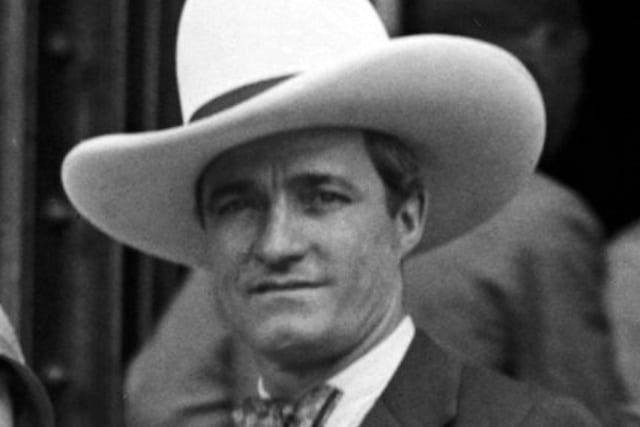
Raised in a wealthy family in Pennsylvania, Tom Mix served in the Spanish-American War before deserting following his marriage. He was never arrested or prosecuted for his transgression. Later he worked in Oklahoma as a bartender, a town marshal, and eventually as a ranch hand. The Miller Brothers 101 Ranch, his employer, was one of the largest in the United States, producing its own Wild West Show in competition with Buffalo Bill (and others).
Mix found he preferred performing over the hard work of ranching. In 1909 he appeared in his first of what eventually totaled nearly 300 motion pictures. Nearly all were silent films, only nine of his performances were in “talkies” as they were known at the time. By 1920 Tom Mix was a major star, known for performing his own stunts on horseback, shooting, and when roping.
A close friend of Wyatt Earp, Mix developed a reputation of being a lady’s man, as well as a hard-nosed negotiator. He was the screen’s first western hero, and one of the biggest of Hollywood stars in the fledgling movie industry, displaying the skills he developed on an Oklahoma ranch.
8. Wyatt Earp became a saloon owner and consultant to Hollywood actors
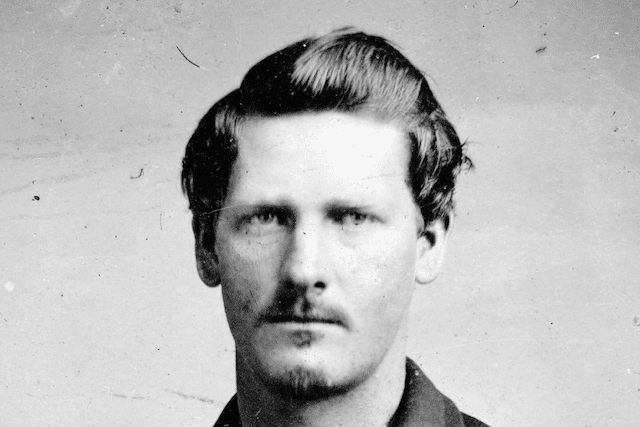
The names of three towns of the American West carry a special panache: Dodge City, Deadwood, and Tombstone. As a lawman and gambler, Wyatt Earp made his mark on all three. Known today primarily for the gunfight in Tombstone at the OK Corral, Earp frequently found himself on the wrong side of the law. Allying with sympathetic interests helped him avoid prosecution several times during his long and colorful life.
After the vengeance ride following the travails in Tombstone, Earp moved to California, where he refereed a heavyweight boxing match, allegedly fixing the fight. From there he went to Alaska, where the Gold Rush failed to enrich him. He kept a saloon and tried mining in California, with minimal success. In the early 1920s he lived in Los Angeles, where he rubbed shoulders with actors and film producers.
Several stars of the early westerns solicited Earp’s advice, and he consulted on several western movies during the silent era. Yet none expressed an interest in Earp’s own story during his lifetime. At his death in 1929, actors William S. Hart and Tom Mix served as pallbearers.
7. Lawman and gambler Bat Masterson became a leading sports writer and columnist
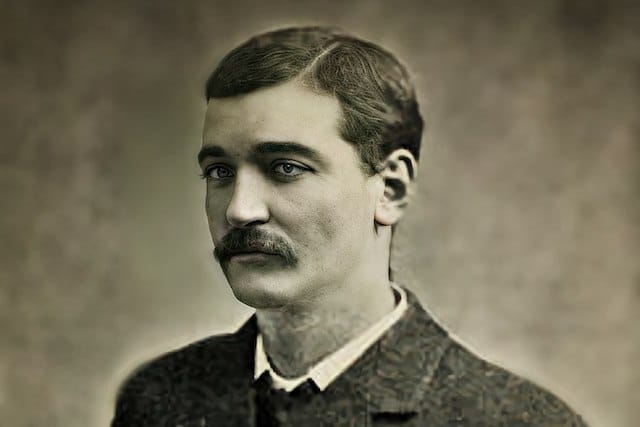
Bat Masterson was another buffalo hunter, plains scout for the army, and law enforcer in the West. He was involved in several gunfights, both over private matters and as a deputy sheriff in Dodge City, Kansas. In 1877 he won election as sheriff of Ford County, Kansas. Bat developed a widely-known reputation as a gunslinger, one of the more feared men in the west.
Bat, whose given name was Bartholomew, moved around in the West, spreading his reputation across the country. By the mid-1880s he made Denver his center of activities, working as a gambler and theater owner. His interest in the sport of boxing made him a respected expert on the sport. In 1895 he moved to New York City, as the hired gun for George Gould, son of the notorious Jay Gould. There, Masterson began writing a sports column for the New York Morning Telegraph.
Eventually, Masterson’s column dwelt not only on sports, but on local and national politics. Theodore Roosevelt appointed him as a Deputy US Marshal for Southern New York. Masterson continued his column, appearing three days each week, for the rest of his life. He died in 1921, behind his desk at the Morning Telegraph, a newspaperman to the end.
6. Cowboy and ranch hand Jack Hoxie starred in silent films, including portraying Buffalo Bill
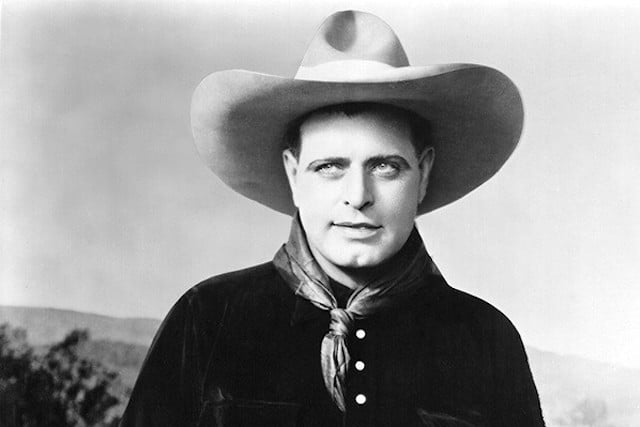
Born in the Indian Territory which later became the State of Oklahoma, John Hoxie spent most of his childhood in Idaho. He worked as a cowhand and rancher, developing riding, shooting, and roping skills. Bored with the activities of the classic western cowboy, in 1909 he joined a traveling Wild West Show operated by Richard Stanley, in which he performed as a bronc rider.
After four years he was offered a role in a silent film short. He appeared in about three dozen such films before starring in the Lightning Bryce serials in 1919. Through the 1920s he became a major star, popular with audiences, and appeared in dramatic roles, nearly always in westerns. Among the stars with whom he appeared were Fay Wray, Hoot Gibson, and Rin Tin Tin.
He was among the earliest to portray Buffalo Bill Cody on film, in 1926, in The Last Frontier. In the 1930s he returned to traveling Wild West shows and rodeos, continuing to perform into the 1950s. The former cowboy left ranching to build an entertainment career, which continued until he retired in 1959.
5. Rancher Earl Bascom became an actor and the Father of Modern Rodeo
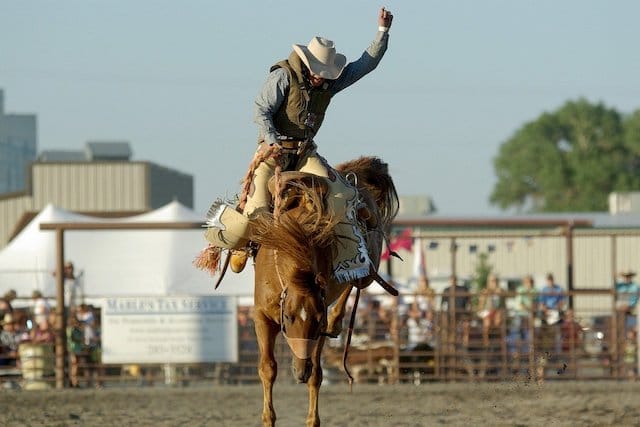
Earl Bascom was born in a log cabin on the family ranch near Vernal, Utah. His father rode with posses which pursued, among others, Butch Cassidy and his gang. Earl grew up as a rancher and cowhand, splitting time between the United States and Canada. At 13, he was discovered to be working as a cowhand by a Canadian Mountie, and the authorities ordered him to return to school.
In his teens Bascom broke horses, shoed horses, rode across most of the American and Canadian west on cattle drives and worked on ranches. Beginning in 1916 he performed on the rodeo circuit in the United States and Canada. Eventually he completed his education, graduating from Brigham Young University in 1940. He later gained international acclaim as an artist and sculptor, focusing on the Western themes he knew so well.
Bascom published articles and stories about the life of a rancher and cowboy, created images of the same in his art, and helped develop rodeo into a modern sport. The man who rode broncs and roped steers later became a Fellow of the Royal Society of Arts in London. He is generally known as the Father of Modern Rodeo.
4. Ranch hand and cowboy Will Rogers became an entertainer, writer, actor, and humorist
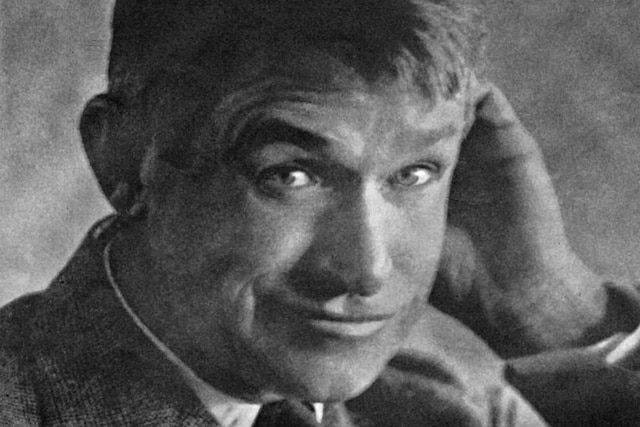
Famed American humorist Will Rogers was born in the Indian Territory, where he was raised on a working ranch. In 1901 he moved to Argentina, hoping to build a ranch of his own on the pampas. When that venture failed he moved to South Africa, where he later claimed to have earned a living breaking horses for the British Army. There he used his trick roping skills to obtain employment in a circus. From there, Rogers moved to Australia and another circus, performing rope tricks and riding tricks. In 1904 he returned to the United States.
No longer interested in ranching, Rogers tried vaudeville. Before World War I, he was a main attraction, appearing in several New York venues, including Madison Square Garden and the New Amsterdam Theatre, the latter owned by Florenz Ziegfeld. He soon appeared in films, in relatively minor roles in the silent film era. The arrival of sound made him a star. By 1935 his syndicated newspaper column, which appeared daily, reached 40 million readers. He became a major radio star as well.
Rogers became an influential figure in American politics, entertainment, and social issues. He advocated for commercial aviation, becoming good friends with Charles Lindbergh and Wiley Post. He was flying with the latter when their airplane crashed in August, 1935, killing them both. No western figure had a greater influence or popularity in America in the early 20th century.
3. Cowboy George McJunkin’s discoveries changed North American archaeology and history
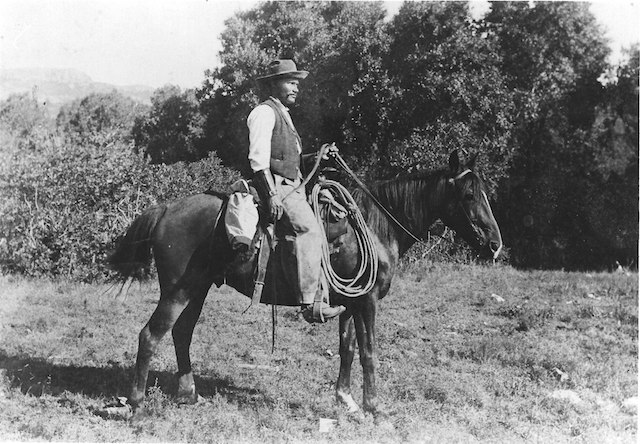
George McJunkin was born into slavery in pre-Civil War Texas, either in 1856, as it reads on his tombstone, or in 1851, according to other sources. Following the war he gained employment as a cowhand and rancher. During cattle drives he taught himself to read and write, assisted by fellow cowhands. He taught himself so well he became an acknowledged expert in the field of archaeology.
By 1868, McJunkin was well-known as an expert horseman and rancher. He moved to New Mexico, becoming the foreman on the Crowfoot Ranch, near Folsom. In 1908 the Folsom region suffered a devastating flood. Following the flood, McJunkin discovered fossilized bones of prehistoric bison, as well as obviously man-made flint arrowheads, now known as Folsom Points. For over a decade McJunkin attempted to gain interest among archaeologists to excavate the site. Not until 1926 did he succeed.
McJunkin’s discovery established proof that prehistoric humanity lived in the region nearly 10,000 years earlier than previously believed. The evidence of man-made weapons embedded in the fossilized remains of a species extinct for that period was irrefutable. It was proof humanity existed and hunted in North America during the late Ice Age. By the time the finding was excavated and analyzed, McJunkin was dead, but his discovery earned him a place in the scientific community, as well as in Western lore.
2. Pat Garrett became a customs agent in El Paso, Texas

Pat Garrett is known as the man who killed Billy the Kid, though his true story is considerably more complicated than that of the noble lawman getting his man. During his lifetime he held several different jobs, as did many westerners. Garrett worked on ranches, tended bar, offered his gun for hire, rode with the Texas Rangers (though only for a few weeks) and invested in irrigation projects. All of the latter failed.
As a lawman Garrett was involved in several gunfights, and the killing of several men, including Billy the Kid. Garrett was often suspected of illicit doings by neighbors in all of the various Western communities in which he lived, and he embellished his own exploits in the finest Western tradition. In 1901, President Theodore Roosevelt appointed Garrett as the US Customs Agent for the port of El Paso, Texas. Garrett’s reputation was such that the appointment became controversial.
Garrett proved unable to perform the duties of his office with anything resembling professional competence. He engaged in fistfights with employees, public disputes with importers, and generally became an aggravation to Roosevelt. After he was replaced in 1906, Garrett returned to New Mexico, where he was murdered under still unresolved circumstances in 1908.
1. Rancher Theodore Roosevelt became President of the United States
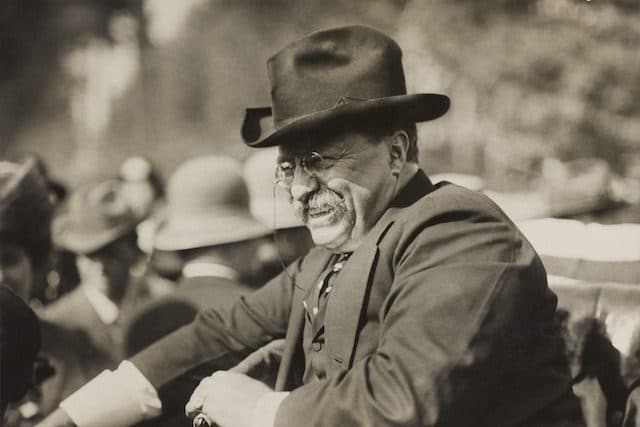
Theodore Roosevelt was born in New York, educated at Harvard, and epitomized Eastern power and prestige. On February 14, 1884, his mother and his beloved wife died in the same house, two days following the birth of his daughter. The immense tragedy devastated Roosevelt. To assuage his grief, he did what many Americans had done before him: He went west. Settling on a ranch in North Dakota he named Elkhorn, Roosevelt embraced Western life.
For the rest of his life, Roosevelt extolled the virtues of ranching, camping, exploring, and hunting. He brought his vigorous energy to the ranching life, wrote magazine articles and books describing it, and dedicated himself to preserving the ranching lifestyle. He became friends with Bat Masterson and Pat Garrett, among others. Teddy posed for photographs and portraits decked out in Western gear, hunted bison, Bighorn sheep, grizzlies, elk, and other big game.
Eventually Roosevelt overcame his grief and returned to New York. A long political career led to him being elected Vice-President of the United States under William McKinley, assuming the Presidency after McKinley’s assassination. In the White House he continued to celebrate the virtues of the American West and the people populating it. Roosevelt’s adoption of Western life remains a major piece of his legacy over a century after his death in 1919.
1 Comment
Some of my ancestors were from the Tombhstone area. Wyatt Earp was not a revered figure there, regarded as a thug and an outlaw. He was only there for a year before he left Arizona just ahead of a murder indictment.
He had the good fortune to outlive any of his detractors and write his own legend, a remarkable work of fiction which is regarded as history by some.